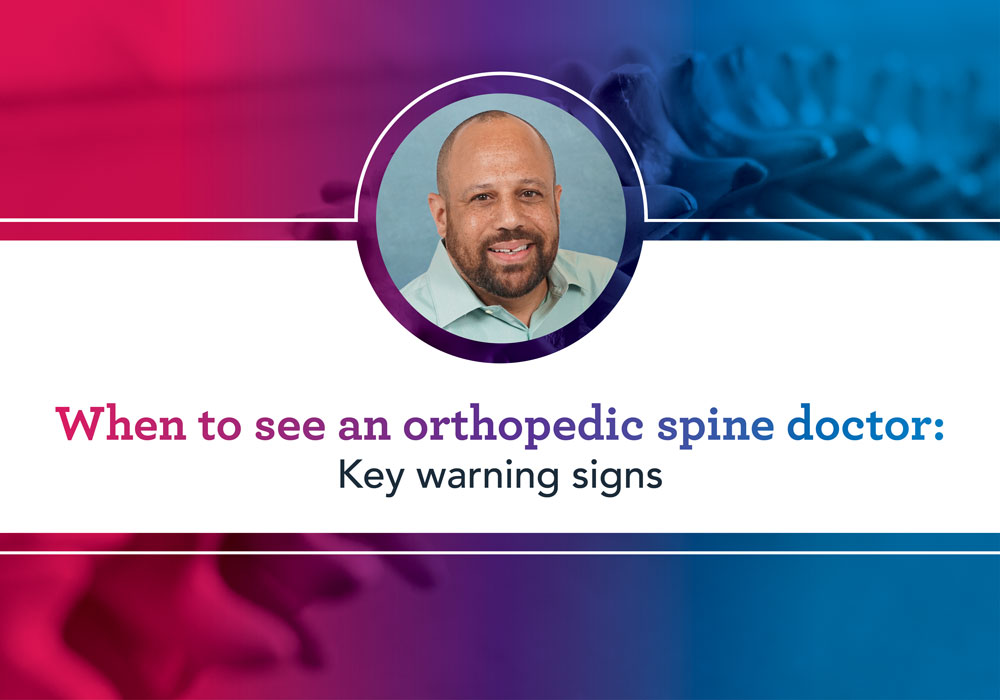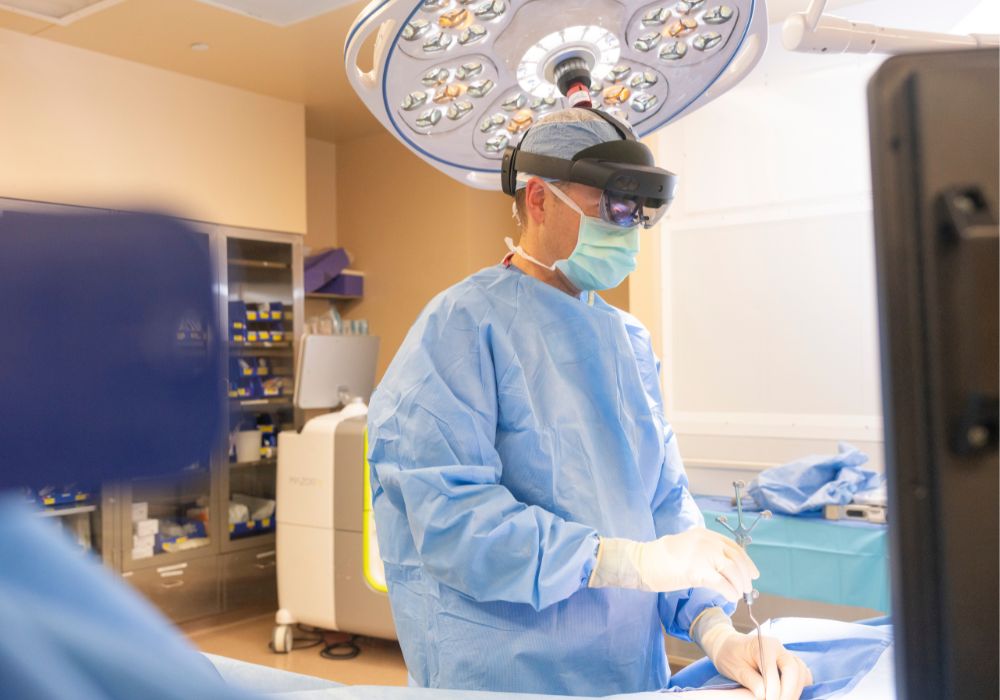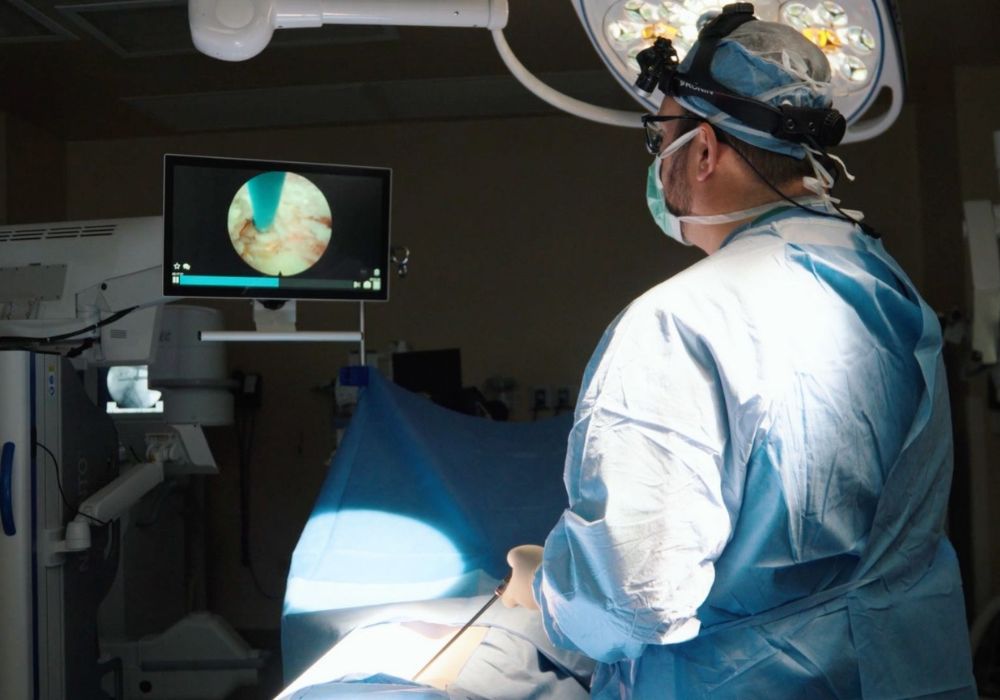Have you been told you need a lumbar laminectomy? It’s a very common and generally safe type of spine surgery for treating lower back pain.
Before you decide to undergo a lumbar laminectomy or any surgical procedure, it’s crucial to have all the facts about this treatment option.
Read on to learn what happens during a laminectomy, what to expect during recovery, how to find the right surgeon and when it makes sense to get a second opinion.
What is a lumbar laminectomy?
A lumbar laminectomy is a surgical procedure that involves removing a portion of the lamina—the back part of a vertebra that surrounds the spinal canal—to ease pressure on the spinal cord and nerves of the lower spine. It’s also called decompression surgery.
This compression can be caused by a combination of factors, like bone spurs, herniated disc symptoms, or thickening of the ligaments within the spinal column. These conditions cause lumbar spinal stenosis.
In some cases, a lumbar laminectomy may be done as part of a surgery for a herniated disk when a surgeon needs to remove part of the lamina to access the damaged disk.
Who is a good candidate for a lumbar laminectomy?
A spine specialist will typically recommend a lumbar laminectomy if:
- Non-surgical treatments like physical therapy, medication or injections haven’t provided back pain relief
- You’re experiencing weakness or problems walking
- You feel numbness or tingling in your buttocks, legs and feet
- You’re losing control of your bowels or bladder (this is less common)
How do I choose the best spine surgeon for my lumbar laminectomy?
Undergoing back surgery is a big decision, and you want to have all the information available to make the right decision for you. You should also feel empowered to get a second opinion before scheduling surgery.
Maybe you’ve had spine surgery in the past and didn’t see the results you had hoped for. It’s still worth talking to another provider to see what options are available to you.
Spine surgery is never your only option for treating spine pain. A good spine surgeon or physiatrist will always suggest that you try less invasive alternatives before proposing having a lumbar laminectomy.
The best doctor to perform your lumbar laminectomy won’t be intimidated if you want to get a second opinion and will make sure you’ve fully explored all conservative, non-surgical treatment options first.
A trustworthy surgeon also won’t recommend having surgery on your back unless the expected benefits outweigh the potential risks. Schedule some time to talk with a spine specialist to discuss the pros and cons and back surgery risks.
What should I do to get ready for a lumbar laminectomy?
If you’ve weighed your options and decided to have a lumbar laminectomy, you should take time to ask questions about the procedure and what to do to prepare beforehand.
Your surgery team can give you a more specific list of things to do before your surgery, but some of those things might include:
- Coordinating a ride home. Have someone waiting to take you home after surgery. Anesthesia and pain medicine will make it unsafe for you to drive or get home on your own.
- Telling your doctor about medicines and supplements. Let your doctor know about any medications you take (especially if you’re taking aspirin or blood thinners). They will tell you if you should stop taking them before the surgery.
- Preparing your home. Spending some time to make your home more accessible can make your recovery easier. You won’t have the strength or ability to make significant changes to your environment after surgery.
- Finding a caregiver. Plan to have someone available to help you at home after your lumbar laminectomy. Most patients need help at home for four to six weeks after surgery.
What are the typical outcomes for patients who undergo lumbar laminectomies?
A lumbar laminectomy is a generally safe procedure and is very common. It is a less invasive spine surgery that can significantly improve symptoms.
That being said, some nerve symptoms can take months to improve fully. Lumbar laminectomy is generally successful at alleviating leg pain due to spinal stenosis, but this benefit may lessen over time if you have an aggressive form of arthritis.
While lumbar laminectomy is a generally safe procedure, there are some potential risks (as with any back surgery), including:
- Bleeding
- Infection
- Blood clots
- Nerve injury
- Spinal fluid leak
Your surgeon can tell you more about your risks or potential complications from surgery.
What is the recovery time for a lumbar laminectomy?
Some patients can go home the same day after a lumbar laminectomy, while others may require a short hospital stay. Most people will go home no more than 1 to 2 days after surgery.
You can expect your back to feel stiff or sore during back surgery recovery. You may have trouble sitting or standing in one position for very long and may need pain medicine, but this should improve in the weeks after surgery.
Depending on your specific procedure, you may need to avoid strenuous activities involving bending, stooping or heavy lifting for two to three months. Depending on your job, you’ll likely be able to return to work in 4 to 6 weeks.
Full recovery from lumbar laminectomy surgery can take a few weeks to a few months. If you are also undergoing a spinal fusion, your recovery time may take longer.
Your doctor may recommend physical therapy or light exercise after your lumbar laminectomy to improve your strength and flexibility as you recover from surgery.
Get a second opinion at OrthoIndy
OrthoIndy has been named one of the best hospitals for spine surgery and is in the top 5% in the nation. We are proud to be a Five-Star Recipient for the 2021 Spine Surgery Excellence Award™.
If you’re struggling with back pain or are looking for a second opinion about getting a lumbar laminectomy, schedule online or call us to set up an appointment with one of our orthopedic specialists.
If your injury or condition is recent, you can walk right into one of our OrthoIndy Urgent Care locations for immediate care. For rehabilitation and physical therapy, no referral is needed to see one of our physical therapists.





